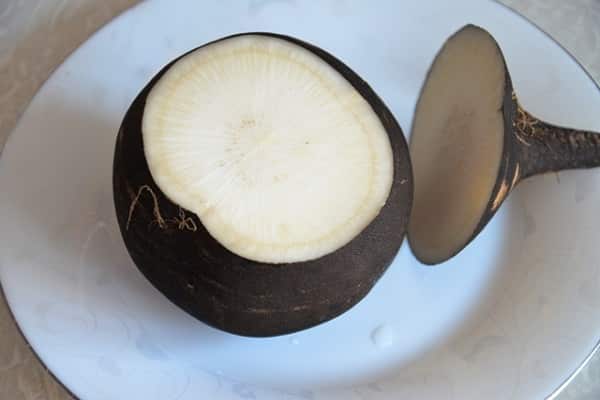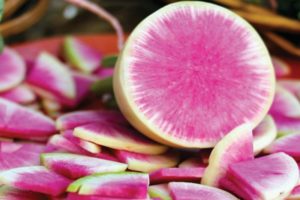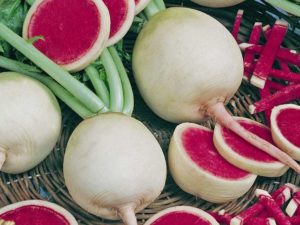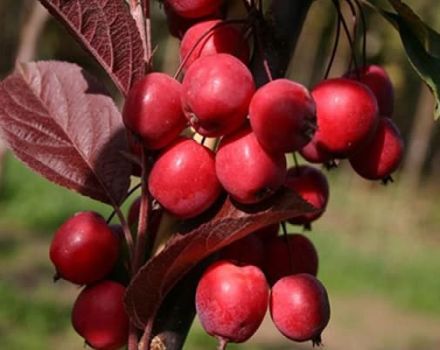How to keep a radish for the winter at home in a cellar or apartment, is it possible to freeze
Radish storage is a process that gardeners should know. Knowing all the subtleties, a person can enjoy a vegetable not only in winter, but also in spring. This will allow you to diversify your daily meals and enrich your food. And although radish varieties differ in taste, they are all good for the human body.
What tools and materials will be required
Preservation tools and materials are selected depending on the chosen method. These can be wooden boxes, barrels or buckets. With this method of shelter, the roots are necessarily covered with sand. You can also use plastic bags. A prerequisite is that they must be dense.
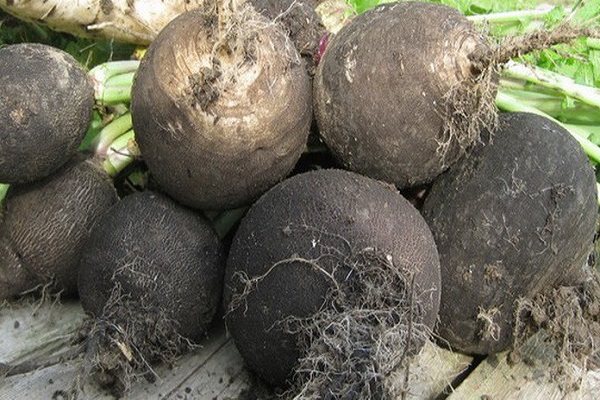
Collection and preparation
Before you start digging up the roots, you need to make sure they are ripe. If you adhere to timely terms, the vegetable will reach the optimal size, which is characteristic of a particular variety. It is not recommended to postpone the harvest time. If the roots are overripe, they will become tough and lose their taste.
You need to get rid of small root crops without any regret. Do not store healthy and diseased vegetables together. If the fruits are deformed, they are thrown away. Selected specimens are dug out of the soil, after which the tops are cut off.
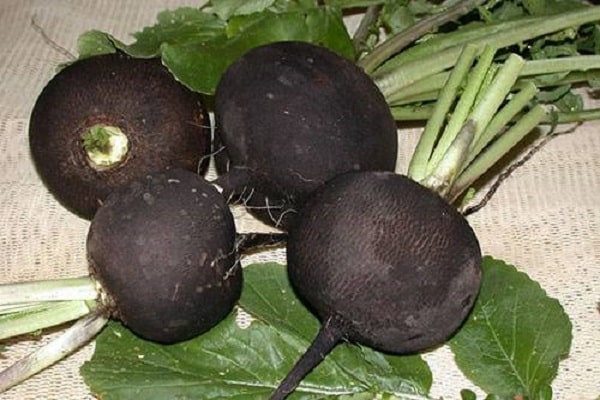
Hanging roots are also pruned, being careful not to damage the root. Before being sent for storage, a roll-shaped heap is formed from root crops and covered with a layer of earth of 15-20 cm. After that, vegetables are sorted out, choosing only elastic and healthy fruits without flaws. To keep the taste juicy and fresh, it is necessary to provide the radish with comfortable storage conditions.
At what temperature to store and how long
The scheme is as follows:
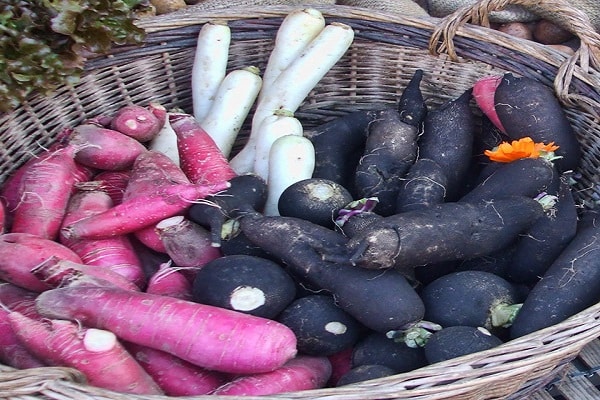
- refrigerator - +2 ° С, from 1 to 1.5 months;
- freezer - -15 ° С, up to a year;
- balcony - 0 ° С, up to 8 months;
- cellar or basement - 0 ° C, 8-10 months.
It is important to observe the indicated temperature values. Verified by gardeners and farmers.
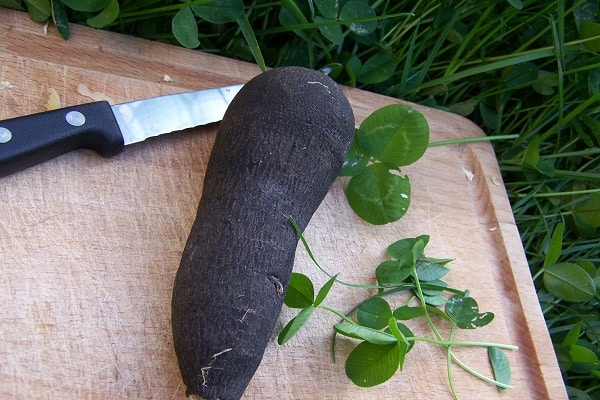
Choosing a storage location
This issue should be approached with great responsibility. There are several options for storing root vegetables. The choice depends on the amount of the crop and the availability of space to place the vegetables. They use several methods at once to check their quality, or choose just one.

Storage for the winter at home
People who grow root vegetables want to enjoy them as much time as possible.To please themselves and their loved ones with fresh vegetables, they make preparations for the winter. Thus, on vitamin-free days, you can pamper your body with fresh radish and replenish the supply of vitamins. At home, it is realistic to provide storage of vegetables.
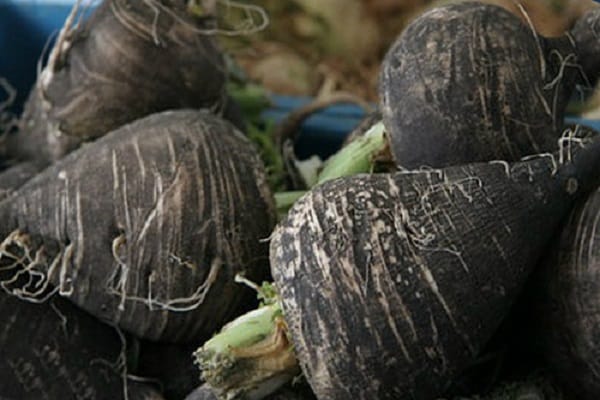
How to store radish for the winter
There are various ways to store your radish at home. Each of them has its own characteristics that must be considered before choosing.
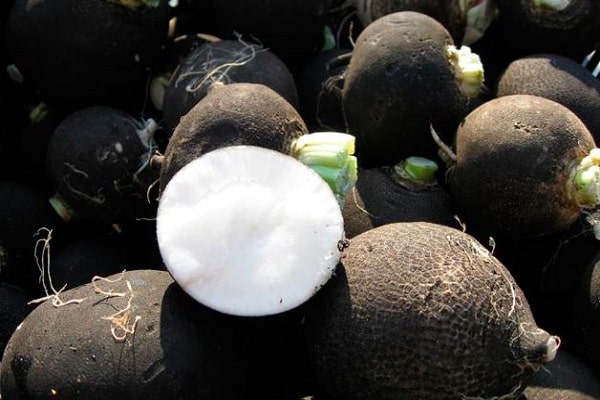
Cellar storage
Any variety of this vegetable thrives best in a basement or cellar. In such rooms, the temperature is no higher than +3 ° C with a humidity of 85%. Before placing the root vegetables for winter storage, they are carefully prepared. The room itself should not be infected with parasites and fungi. If insects live in it, they get rid of them.
Boxes with holes filled with radish are transferred to the basement. Sprinkle each layer with slightly damp sand. In the same way, the radish can be stored on the shelves. To maintain comfortable conditions, the sand is periodically moistened, and rotten and spoiled specimens are disposed of. If you do not do this, healthy vegetables that were nearby can go bad.
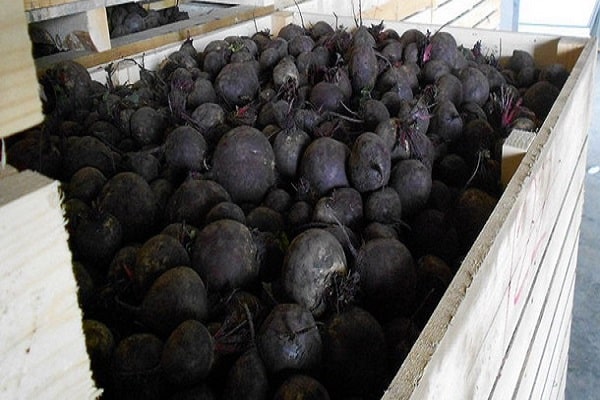
Wooden barrels are also suitable for storing radishes. In addition to containers, neighbors are chosen - vegetables and fruits, which will not have a negative effect on storage. Carrots and potatoes are the best company. It is undesirable to place apples or pears nearby, as they can accelerate the germination of the radish. In addition, vegetables from such a neighborhood begin to absorb foreign odors.
In the apartment in the refrigerator and freezer
How to store crops if the house is not equipped with a cellar and basement? There is only one answer - a refrigerator. To do this, all vegetables are folded in polyethylene bags with holes made so that they can breathe freely. The containers are placed on the lower shelves.

If the refrigerator has special drawers for vegetables, you do not need to put the radish in bags. In this case, you need to keep in mind that vegetables cannot be stored in this form for a long time. It is recommended to eat the root vegetables as soon as possible. This option is suitable if the vegetable should be on hand in the near future.
Experienced gardeners advise against using a freezer for this purpose. Freezing will make the vegetable tasteless and soft. It can be frozen only in one case - the treatment of colds. Grated root vegetables are packed in sachets and stored in the freezer. If necessary, take out only one and use it immediately.

It is best to store vegetables on a shelf in the refrigerator rather than freezing them. At the same time, they are checked for rot or mold. Over time, they become soft and unsuitable for human consumption. Such instances should be disposed of.
On the balcony
If a person does not have a country house, storage conditions can be arranged on the balcony. They will feel best in wooden boxes, sprinkled with sand on top. If the frosts are very strong, the containers filled with vegetables are covered with cotton blankets. This option is suitable for margelan, black and green radishes.
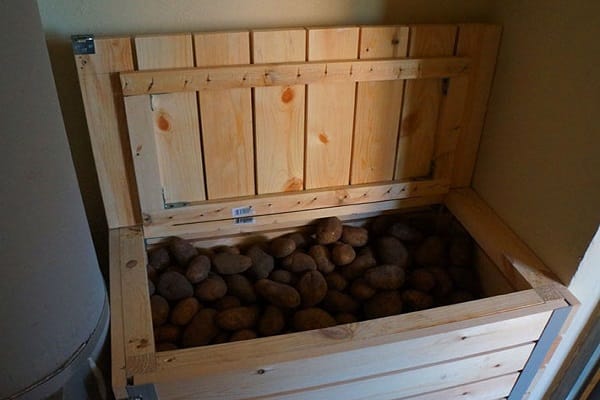
The balcony or loggia for storage must be glazed. This is important, as the optimal temperature is a key feature in this matter. Glass prevents precipitation from settling, because moisture contributes to the development of rot and mold. The temperature on the balcony should never be below 0 ° C.
Conservation
Besides storing fresh vegetables, you can roll them up in jars and thus get a completely different taste. Preserving crops for the winter is a great idea. There are tons of recipes for creating blanks. Most Popular:
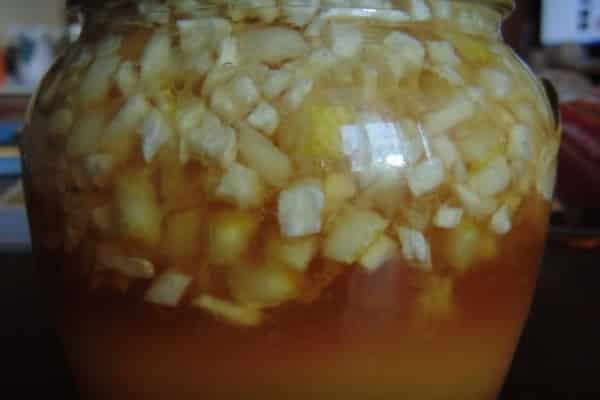
- Pickling. The vegetables are peeled and washed thoroughly, then cut into small pieces and sprinkled with salt. Remove excess moisture by placing everything in a colander and rinse again.Divide the required amount into jars, pre-sterilizing them. Prepare a marinade based on water, vinegar, salt and sugar. Remove the boiled liquid from heat and let cool. Then pour into jars and close with plastic lids.
- Pickled vegetables. Peeled root vegetables are chopped with a fine grater and garlic and salt are added to taste. The mass is poured into banks, ramming it tightly. Store in a cool and dark place. The product is ready for use in 2 weeks, by which time the radish is completely fermented.
- Vegetable salads. The radish, along with other vegetables, is chopped and closed in jars. Other ingredients include dill, parsley, celery, carrots, cabbage, and garlic. Assorted vegetables are also tightly packed in jars, adding vinegar, salt and sugar. Containers with vegetables are sterilized in water under covered lids.
Regardless of the chosen option for preparing the radish, the jars are stored in a dark and cool place.
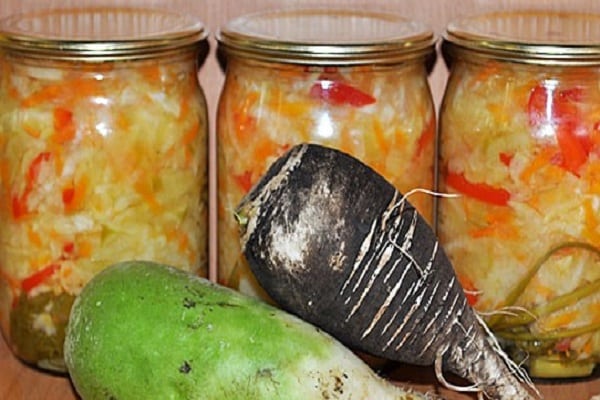
Features of storage of different varieties
How to preserve a vegetable so that it does not lose its taste? Features regarding the safety of root crops depend on their type. Margelan and black are best kept in the refrigerator, after placing them in a bag. This method has the advantage of increasing the percentage of air humidity inside the bag, contributing to an increase in carbon dioxide. Due to this, the shelf life of green and black radish becomes even longer.
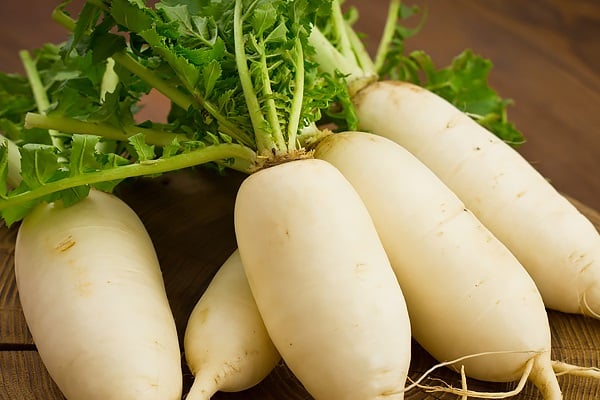
Summer
The first to be stored are the summer varieties, which include pink and red Chinese, Viennese yellow and long white. Remnants of the earth are removed from each root crop by cutting off the roots and tops. If left on, the radish will dry out in a few days. It is better not to rely on long-term storage of summer varieties, since they are not intended for this. They start to deteriorate after 5-6 days, so the storage period does not exceed a week.
To extend the shelf life, the radish is placed in the refrigerator. Before this, the following procedure is performed:
- select the most suitable copies;
- remove parts with flaws;
- placed in a polyethylene bag.
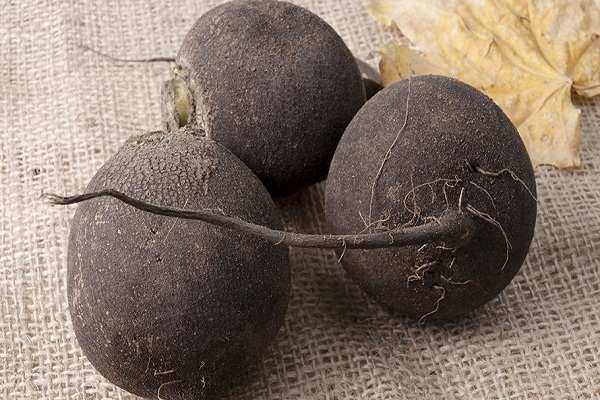
You need to store black radish only in bags with holes so that fresh air can flow to the harvested vegetables. Temperature fluctuations should not exceed the range from +1 ° С to -2 ° С. Relative humidity also plays an important role. Comfortable conditions - 85-90%.
Following these simple rules will help increase the shelf life up to 1 month.
Autumn
Winter storage is a long period, which some varieties of radish may not withstand. Daikon belongs to the autumn and, subject to certain rules, will lie until early spring. For this purpose, a basement or cellar is used. But before laying vegetables, the room is prepared.

Winter
Winter radish varieties with good keeping quality are most suitable for long-term storage. In order to extend the dates, the harvest is harvested almost at the last moment. At the same time, the onset of frost should not be allowed. The suitable period is late September to mid-October.
The duration of storage depends on many factors, including the type of vegetable, the location, preparation and timing of harvest. If you do not take into account at least one point, work will not bring the desired results. Therefore, you must follow all the rules and recommendations. In addition, they have been tested over the years by experienced farmers, agronomists and ordinary gardeners.
